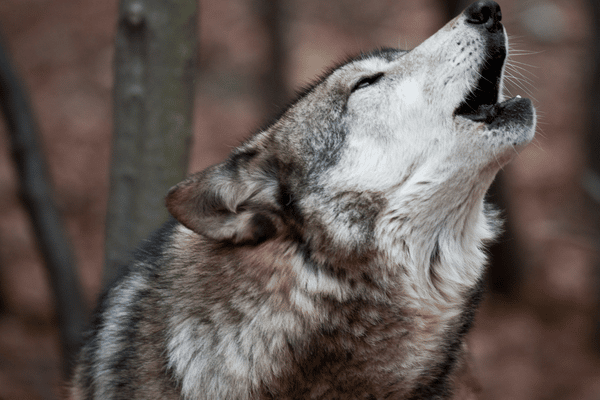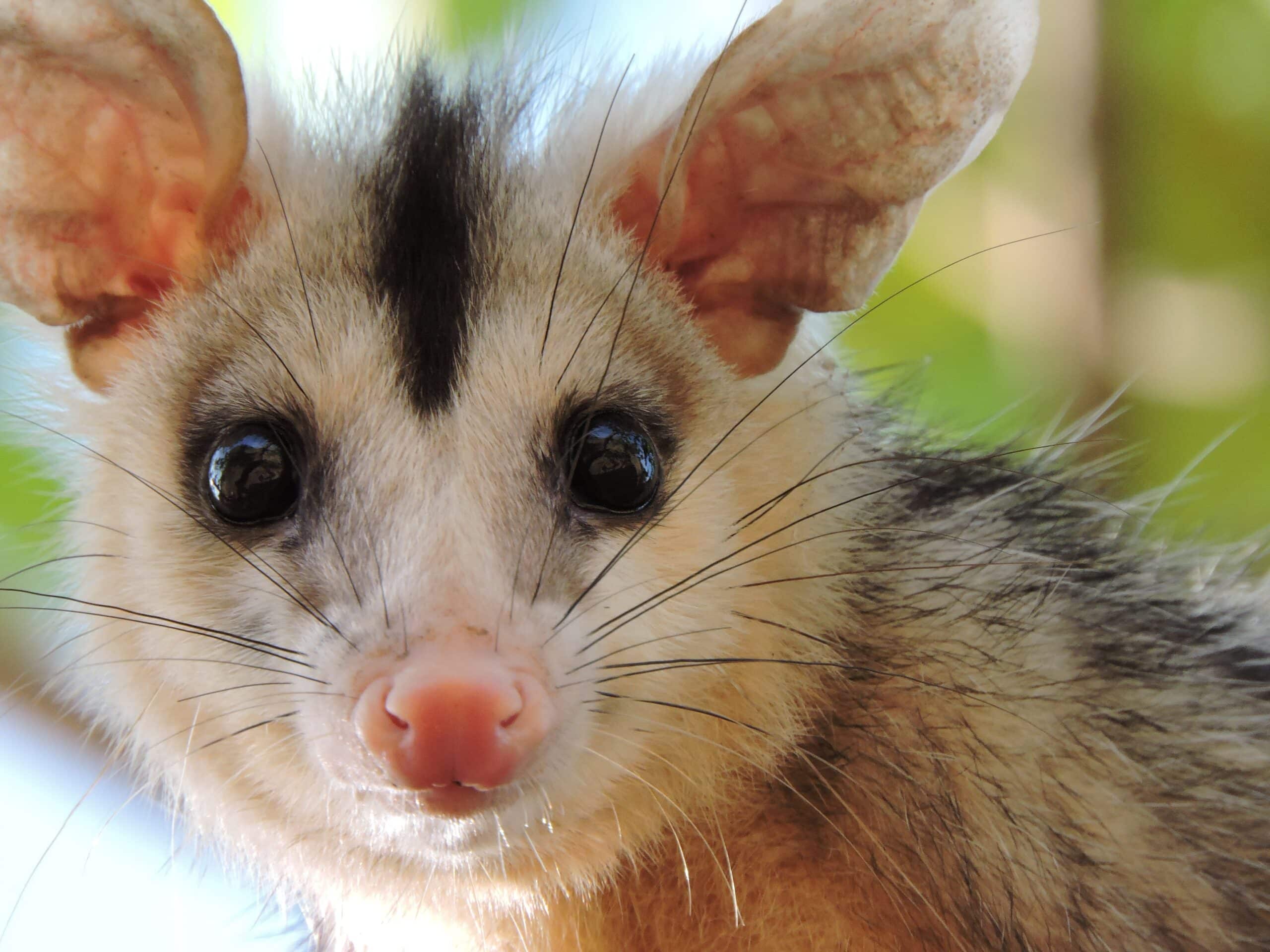
The gray wolf is an apex predator in various regions of the world. Their keen intelligence and social behavior, combined with their extraordinary hunting abilities, make them a remarkable species. In this article, we will discuss the habits and behaviors of the gray wolf pack and explore how these traits have enabled them to survive in various environments over thousands of years.
Gray wolves communicate through scent marking and vocal cues such as howling. They live in packs made up of three or more related individuals; however, some packs may be larger or smaller than this, depending upon their hunt range and food availability. Wolves work cooperatively when hunting swifter prey such as deer, elk, and moose by using strategies they have developed over time – such as the classic ‘surround maneuver’ used when hunting large prey.
Wolves are territorial creatures who defend their area aggressively against intruders; they use growls, snarls, and displays of dominance to ward off other animals trying to trespass on their turf. Uniquely curious among predators, wolves also use play to learn new skills that could become useful when they’re older – chasing balls similar to dogs!
This article will look at the positive traits that make wolves apex predators and discuss common misconceptions about grey wolf behavior that often lead people to fear them unnecessarily.
Overview of Gray Wolves
Gray wolves are formidable apex predators. They are keystone species of the Northern Hemisphere and can be found in wilderness areas from Canada to Russia. Gray wolves are typically found in packs with a fixed hierarchy, and they dominate the landscape with their large size and intelligence.
In this article, we will discuss the habits and behaviors of the gray wolf pack and its essential role in the environment.
Physical Characteristics
Gray wolves, an apex predator that roams throughout much of North America, are capable of adapting to various habitats and are heavily relied upon to balance their ecosystems. As a species, they exhibit a great range in size, weight, and physical characteristics.
To that end, gray wolves can reach up to 39-79 inches in body length while standing 26-32 inches tall at the shoulder. Adult males typically weigh between 60-110 pounds, while adult females tend to weigh between 45-80 pounds. Their thick fur coats come in shades of gray and brown with white, black, or creamy yellow splashes marking many individuals. They have bushy tails that often feature black tips on the end and ears that stand erect atop their triangular heads. The eyes of gray wolves can range from light copper to dark brown and typically feature an intense gaze.
In addition to these distinguishing physical traits, wild gray wolves will often be identified by distinctive howls and other vocalizations due to the unique adaptations within their throaty anatomy.
Habitat
The gray wolf lives in many habitats ranging from well-developed urban areas to subarctic mountain ranges. It is a highly adaptive species known to occupy an array of ecosystems.
In North America, the wolf typically resides in boreal forests and Arctic tundras, though it can also be found living primarily in mountainous areas, coastal regions, and rangelands.
In Europe and Asia, the habitat of the gray wolf is more diverse and includes taiga, steppes, deserts, grasslands, montane forests, and temperate forests. Their preferred hunting ground is on the edges of pinyon-juniper woodlands, where they can pursue their prey most effectively.
In some ranges, wolves have been known to colonize a wide variety of environments which necessitates them being able to survive extreme temperatures and diverse terrain. This adaptability allows for solid genetic diversity among all populations throughout their range – an attribute crucial for any successful long-term species conservation effort.
Diet
Gray wolves are at the top of their food chain and have tremendous dietary flexibility. Their diet includes a wide range of prey items such as deer, elk, moose, small mammals like beavers and mice, and even fish. Wolves may also scavenge carrion or supplement their diet by eating fruits and vegetables.
While most wolves hunt in groups for large prey items such as deer or moose, single wolves or pairs may take smaller prey if conditions permit. Wolves search for their food both on the surface and below ground -their sense of smell is specially adapted to find burrowing animals underground.
Wolves serve an essential function in maintaining populations of animals like deer. Hunting the weak, old, and sick individuals help keep populations healthy by removing these easily preyed-upon individuals from the larger groups.
Social Life of Gray Wolves

Gray wolves live in packs with complex, hierarchical social structures and behaviors. Wolves travel and hunt together, sharing resources among the pack. Wolf packs have an alpha leader who leads the pack, disciplining and organizing all the other members. The social life of wolves is fascinating and allows us to learn more about the apex predator.
Pack Structure
Gray wolves usually live and hunt in packs of around 6-10 individuals – usually related family members. An alpha male and female lead the pack, the only two allowed to breed, though other pack members often help raise the pups. The alpha pair’s role is to keep the pack together, coordinate hunting, defend their territory, and protect the young.
Once their position as a leader has been established, they maintain it through displays and warnings, such as growling or baring their teeth. Subordinate wolves accept their rank mainly through body language, which includes cowering behavior, tucking of the tail, and licking around the muzzle area of higher-ranking wolves.
The hierarchy extends beyond just between members of different statuses: all social interaction within a single wolf pack heavily depends on various levels, including age and sex. For example:
- Younger wolves may defer to older animals regardless of whether or not they are higher ranking in general.
- Adult males may defer to adult females.
- Lone wolves looking for a mate may defer to mated pairs.
- Injured animals may defer to healthy ones.
A distinction can also be made between core members – those that generally stay within the same pack through adulthood – and periphery members – those transients that wander away from home packs or immigrate from other packs for any number of reasons making up roughly 10% or less of any particular wolf population.
Hunting and Feeding
The gray wolves’ hunting habits are among their most essential and fascinating traits. Wolves are pack animals, meaning they rely on each other to survive. They operate as a cohesive unit, dividing roles within the pack and communicating with each other through body language, scent marking, and vocalizations. With their heightened social skills and cooperative spirit, gray wolves can effectively hunt large prey mammals such as elk, moose, and caribou.
When a pack of wolves sets out to hunt together, they get creative; certain members play a dominant role while others take on pivot roles such as blocking or gathering the herd together before it is attacked. The wolves also practice coordination; some distract the prey from the front while others push from behind to increase their chance of catching food. Wolves rely heavily on teamwork, so cooperation between members is essential for effective hunting; this collaboration often results in a wealth of food for the entire pack to share.
It’s important to note that despite being known predators, gray wolves do not only feed on live prey animals. In periods where live prey is hard to come by, they have been known to scavenge carcasses of smaller mammals or fish caught in shallow streams or ponds, as well as consume edible plants while out actively searching for food. The ability of gray wolves to adapt their feeding habits based on conditions makes them one of nature’s ultimate survivors!
Communication

Gray wolves use various communication techniques to interact with each other, both within packs and between individuals. Visual displays such as body posture, facial expressions, and tail carriage play a significant role in wolf communication. To communicate, wolves also use scent marking and vocalizations, including barking, growling, whining, yelping, and howling.
Wolves interact with each other through body language. Submissive wolves will crouch down or grovel to show that they do not mean to challenge the dominant wolf. Dominant wolves will stand tall with their hackles raised to demonstrate their rank and presence. Aggressive wolves may curl their upper lips and bare teeth to show dominance over another individual or pack. Wolves may raise their tails straight up in the air or flick them side-to-side when approaching new individuals or packs.
Pack members use the scent as an identification system, so they know who belongs within the group and who is an outsider. Wolves mark other group members with urine and scent glands on their faces, genitals, front legs, and hind quarters. In addition to identifying individuals within a pack by smell, they leave scented trails along paths they regularly travel that advertise the presence of a pack in the area. Furthermore, wolves communicate via calls accompanied by visual signals such as ears forward or back depending on emotion; happy wolf calls often have ears perked up, while flattened ears around all sides of the head typically accompany threatening wolf calls.
As territorial animals, gray wolves use howls as warnings for other packs and rallying members during hunting trips or bringing them together when moving from one location to another. Howls can also serve different purposes depending on their context – they signify aggression towards intruding packs. They can also be used in peaceful encounters between groups when traveling long distances from one place to another within overlapping territories.
Gray Wolves and Humans
Gray wolves were once one of the most feared predators in North America, but decades of controversy and misunderstandings have drastically changed how we interact with them today. Our relationship with the gray wolf is complex, and it’s worth taking a closer look at how wolves and humans interact and what impact humans have had on their habitat and behavior.
Historical Relationship
Gray wolves (Canis lupus) have long and varied relationships with human beings. Once upon a time, they were among the most feared predators of the wilderness, but their association with humans has stretched far beyond mere fear and intimidation. Wolves have long been revered by certain cultures for their strength and intelligence, even giving rise to the phrase ‘lone wolf’ as an homage to their solitary nature.
In some parts of Europe, Grey wolves have risen from nearly extinct to culling pests with large affected populations like deer, elk, and boar. On the other hand, in North America, wolf populations have significantly decreased due to government programs that sanctioned killing them. This mandate was primarily carried out due to livestock culture farmers who felt threatened by losing livestock preyed upon by wolves. To this day, organized extermination campaigns drove gray wolves off much of their former range in Britain and mainland Europe. Until recently, gray wolves had been largely absent from Great Britain for over two centuries due to these programs. However, recent studies show that small numbers are beginning to naturally wander back into England and Scotland after recolonizing Scotland in 2005.
There is still controversy surrounding wolf numbers in North America despite decades of conservation efforts and reintroductions into various parts of wilderness parks across the Contiguous United States and Alaska. Even so, public opinion on wolf/human relations is becoming more positive, with groups using mass education campaigns to increase understanding of the optimistic impact grey wolves have on local wildlife systems through natural population control such as:
- Storybooks wrote for children about the importance of grey wolves
- Providing educational materials targeting Alaska natives about traditional uses for specific wolf organs for dietary supplements or traditional herbal medicines depending on tribe beliefs about grey wolves
warily moving toward protecting them instead of actively hunting them down.
Conservation Efforts

The gray wolf was hunted, trapped, and poisoned nearly to extinction in the lower 48 states by the mid-20th century. After it was listed as endangered in 1974 under the U.S. Endangered Species Act, legal protections combined with habitat protection and reintroduction programs helped its population steadily increase from an estimated several thousand in 1995 to more than 6,000 today – a marked success for species recovery efforts.
For gray wolves to maintain viable populations, there must be enough suitable habitat to live, hunt, reproduce, and raise their young across large land areas. Reintroducing wolves helps ensure that there is sufficient genetic diversity and population size – both essential elements of successful conservation efforts. The large ecosystems supporting wolf populations also have significant benefits for other plants and animals in these areas.
Conservation organizations continue to monitor wolves’ populations while working with local governments and private landowners in many states to help restore wolf habitat by promoting grizzly transfers between captive breeding facilities and natural habitats. Additionally, they are advocating for policies that protect native habitats from development or disruption so wolves can maintain secure homes where they can roam freely without coming into contact with humans too frequently or resulting in any harm being done on either side.
Conclusion
The gray wolf is a remarkable species with many habits, traits, and behaviors that make up its intricate family structure. Beyond the mere physical characteristics and hunting skills, the gray wolf is a complex animal with a distinct personality. While they depend on each other for survival in their pack structure, individual wolves still display unique behaviors that set them apart. These fascinating creatures have functioned within their pack dynamics, extending beyond hunting or protecting resources.
The gray wolf has survived various environmental changes to remain remarkably adaptive in extreme climates and landscapes, making them one of the most successful vertebrates living today. As humans expand their territory into what was previously a habitat for wild animals, it is increasingly important to understand how wildlife interacts with their environment. Researching the habits of apex predators like the gray wolf can help humans decide how to preserve our ecosystems and prevent further displacement or endangerment of species like this beautiful creature.
Frequently Asked Questions
Q: What is the typical size of a gray wolf pack?
A: The typical size of a gray wolf pack varies depending on the availability of food and other environmental factors, but a typical gray wolf pack usually consists of 5 to 11 individuals.
Q: How do gray wolves communicate?
A: Gray wolves communicate primarily through body language, vocalizations, and scent marking. They may also use a combination of these to establish dominance, territorial boundaries, and other social interactions.
Q: What is the diet of a gray wolf?
A: The diet of a gray wolf consists mainly of large ungulates such as deer, elk, moose, and bison, as well as smaller mammals like beavers, rabbits, and mice. They may also scavenge on carrion and, in some cases, consume plant matter.





